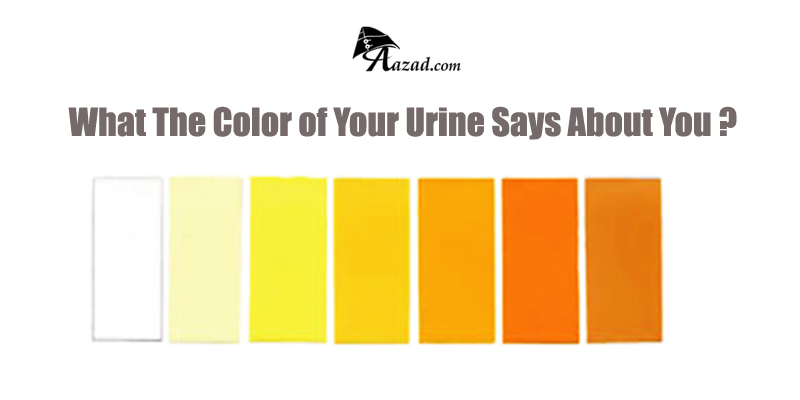- ●Breakthroughs in Prostate Cancer Treatment: What Every Patient Should Know
- ●Ovarian Cancer: The Silent Disease Women Cannot Ignore
- ●Children and Blood Cancer: Why Awareness is Crucial
- ●Women in Aviation India commences the celebration of 10th Girls in Aviation Day
- ●2025 Announcement, Appointment of New Board to Lead Hindustan National Glass & Industries Ltd
What Your Urine Color Says About Your Health?

Urine may have a variety of colors that ranges from deep amber or honey color to a light straw color with many golden variations in between. The color of your urine can tell you a lot about your body.
1. Clear Urine: If your urine is clear, then it can signal that you're healthy or over-hydration. The lighter your urine, the healthier you are. But as the 'ideal' healthy urine colour is straw yellow, clear urine might not be such a good thing. Colorless urine may indicate over-hydration. While not as dangerous as dehydration, over-hydration can dilute essential salts, such as electrolytes, creating a problematic chemical imbalance in the blood.
2. Pale yellow: It means Normal. This is what we're all aiming for. Healthy bodies produce urine that isn't too dark, which signals that you are well hydrated. At the same time, you don't want it to be too clear - this points to a low concentration of waste in what you are passing. Consider this your toilet bowl goal. You should strive to have light yellow pee, somewhere between clear and the color of apple juice. You’re probably sufficiently hydrated if your pee is pale yellow, but it doesn’t necessarily mean anything about your health beyond that if your pee is darker or lighter.
3. Bright Yellow: If your pee looks like a neon billboard, blame B vitamins, Riboflavin (B2) is naturally fluorescent when exposed to UV light. It might be jarring to see, but it’s nothing to worry about. Your body excretes the riboflavin it doesn’t need through urine, which is why excess amounts, either consumed in food or through taking supplements, could make your pee look bright yellow. Almost all multivitamins contain riboflavin, as do food such as eggs, organ meats, lean meats and dairy. Riboflavin (B2) is naturally fluorescent when exposed to UV light, so it can make your toilet bowl a bit of an alarming colour.
4. Dark Yellow: This is typically a sign that you are not drinking enough water, and is at the darkest end of the "normal" spectrum. If you don't hydrate yourself enough, then the waste products your body is getting rid of aren't diluted, causing a darker colour than is healthy. The lesson to be learned from this? Increase your intake of water.
5. Dark Orange or Brown: Light or dark brown urine can signify blood in the urine or a potential liver or kidney disorder. It can also show that you've been overworking your muscles, which release a substance called myoglobin when damaged that can turn urine brown. Urinary tract infections and liver disorders, such as cirrhosis, are other causes. It can also be a possible symptom of jaundice, rhabdomyolysis or Gilbert’s syndrome. Also caused by severe dehydration.
6. Green: Eating asparagus does this for some people, though many more people note the vegetable’s odorous effect upon their urine. Some medications and food dyes produce harmless green urine too, but it can also signal a bacterial infection in the urinary tract. Consult your doctor.
7. Blue: Some medications and food dyes produce bluish urine. So too does a rare inherited metabolic disorder known as familial hypercalcemia or “blue diaper syndrome,” which is characterized by incomplete intestinal breakdown of tryptophan, a dietary nutrient. Consult a physician.
8. Pink or Red: In large amounts, the pigments in beets can actually turn your pee red. This discoloration isn’t harmful and should resolve fairly quickly, says Miller. If it doesn’t, you’ll want to get your urine tested for blood, which is another reason your pee might be red. Bloody urine could be a sign of a urinary tract infection (UTI) or urinary stones, which are usually accompanied with pain and discomfort. Kidney, ureter and bladder cancers can also present with blood in the urine, and typically don’t have other symptoms, such as pain, associated with the bloody urine
...




